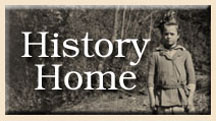

Progressive Environmentalism: Page 2
Preservationists, on the other hand, were more closely comparable to modern
environmentalists. That is, they sought to protect America’s remaining
wilderness areas, or at least those areas that they defined as wilderness
areas, from all manner of encroachment --industrial encroachment included.
Chief among the preservationists was Scottish-born John Muir, a farmer’s
son who, after spending several years at the University of Wisconsin, Madison,
came to view natural science and religious speculation as complementary pursuits.
Like Thoreau before him, he believed wholeheartedly in the physically and
spiritually regenerative power of nature, and wrote numerous books in which
he advocated human/wilderness interaction. In time, his efforts would give
rise to the Sierra Club, one of the first private American associations dedicated
exclusively to the preservation of wilderness areas.
Needless to say, Muir’s views placed him at philosophical odds with
more utilitarian-minded conservationists such as Pinchot. It should thus come
as no surprise that the two men clashed publicly in the late nineteenth century.
The subject of Muir’s and Pinchot’s dispute was California’s
scenic Hetch Hetchy River Valley, which had been set aside as a national park
in 1890. Just ten years after the park designation went into effect, San Francisco
Mayor James D. Phelan sought approval from the Department of the Interior
to dam the Hetch Hetchy as a means of creating a reservoir for his city. To
preservationists’ relief, the plan was initially thwarted by Secretary
of the Interior Ethan A. Hitchcock, who saw no reason to “violate the
sanctity of a national park.” But in the aftermath of the San Francisco
earthquake of 1906, which saw fires engulf the stricken city, and which strained
the city’s water supply beyond limit, Hitchcock’s successor, James
R. Garfield, was more than happy to reverse departmental policy and approve
the request.
Muir and his fellow preservationists were, of course, horrified by the decision.
For them, Hetch Hetchy represented nothing less than a “cathedral,”
and so to destroy it would be tantamount to sacrilege. Pinchot, on the other
hand, supported the project, arguing that a greater use would be served by
building the dam and providing San Franciscans with potable water than it
would be by leaving the Hetch Hetchy to a handful of nature lovers. In the
end, Pinchot and the Conservationists prevailed; President Woodrow Wilson
approved the dam project on December 19, 1913, condemning the Hetch Hetchy.
And yet, for utilitarian Conservationists, the victory was rather hollow,
for it aroused among Progressive Era Americans -- not a few of whom were familiar
with, and concerned about the implications of, Turner’s frontier thesis
-- a passion for preservationism that placed them odds with Pinchot and his
allies. “For three centuries,” Nash writes, “[Americans]
had chosen civilization [over wilderness preservation] without any hesitation.
By 1913 they were no longer so sure.”
Given Americans’ newfound desire to preserve wilderness, it was only
a matter of time before they turned their attention east, to the great forests
of Southern Appalachia. For it was there that private lumber companies, working
with Pinchot’s approval, were rapidly decimating one of the last great
stands of virgin timber east of the Mississippi River. The story of preservationists’
fight to save the Southern Appalachian forests from destruction, and of the
impact that this fight had on the life of Gatlinburg, Tennessee and the Pi
Beta Phi Settlement School, will be discussed in further detail in the essay
“Gatlinburg, Pi Beta Phi, and the Founding of the Great Smoky Mountains
National Park.”
| <<< Page 1 | Page
2 |
 |
|